Our chief strategy to deal with pest and disease in the vegetable gardens is to reduce plant stress levels as much as possible. We achieve this by well timed planting out, providing adequate irrigation and building healthy soils with diverse microbiology to nurture the plants.

Other steps we take are to try many cultivars and stick with the ones that perform best, grow our own plants from seed and only select the healthiest seedlings (for some species we save seed from the best performing plants). We also plant in polycultures to make it more difficult for pests to locate our plants and we introduce various habitats in the gardens for pest predators such as hedgehogs, birds, snakes, lizards, frogs, toads, ladybirds, wasps, mantids and beetles. Finally we practice manual pest removal for certain pests such as Cabbage White eggs and Brassica Bug adults. Our aim with pest and disease organisms is not to entirely eliminate them but to reduce them to a point where they do not make significant damage.
Welcome to our
Online Store where you can find Forest Garden/ Permaculture plants, seeds, bulbs and
Polyculture multi-packs along with digital goods and services such as
Online Courses, Webinars,
eBooks, and Online Consultancy. We hope you enjoy the store and find something you like :) It's your purchases that keep our Project going. Yuu can also find our full list of trees. shrubs and herbs for forest gardens on our
website here
Victoria Bezhitashvili who has joined us for the polyculture study this year has been observing and recording pests and diseases found within the market garden specifically those that interact with the annual vegetable crops. Below you can see a record of her initial observations made in April-May. Another set of observations will be recorded later in the year to follow up. Many thanks Victoria for this report!
Pest and Disease Records - Annual Vegetable Crops in the Polyculture Beds - 2018 by Victoria Bezhitashvili
| CROP | FAMILY | PROBLEM | LEVEL OF DAMAGE
(IMPACT ON PRODUCTIVITY)
April - May |
Kale
Brassica oleracea var. sabellica | Brassicaceae | Whitefly (Aleyrodes proletella) - most plants
Leaf miner – some plants
Caterpillars of Cabbage white butterfly (Pieris rapae) - some plants | Not significant separately, combined effect can be significant |
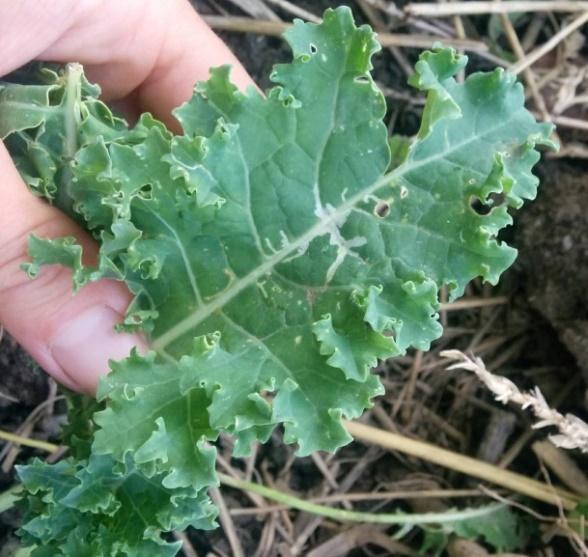 |
| Leaf miner (unidentified) on kale plant |
 |
| Newly hatched caterpillars of Cabbage white butterfly (Pieris rapae) on kale plant |
| CROP | FAMILY | PROBLEM | LEVEL OF DAMAGE
(IMPACT ON PRODUCTIVITY)
April - May |
Beans
(Phaseolus vulgaris), bush beans and climbing beans | Fabaceae | Bacterial bean blight (prob. Halo blight, caused by Pseudomonas syringae pv. phaseolicola)– some plants
Eaten leaves (prob. True bugs)
prob. Black bean aphid Aphis fabae, farmed by ants | Not significant
Not significant
Not significant |
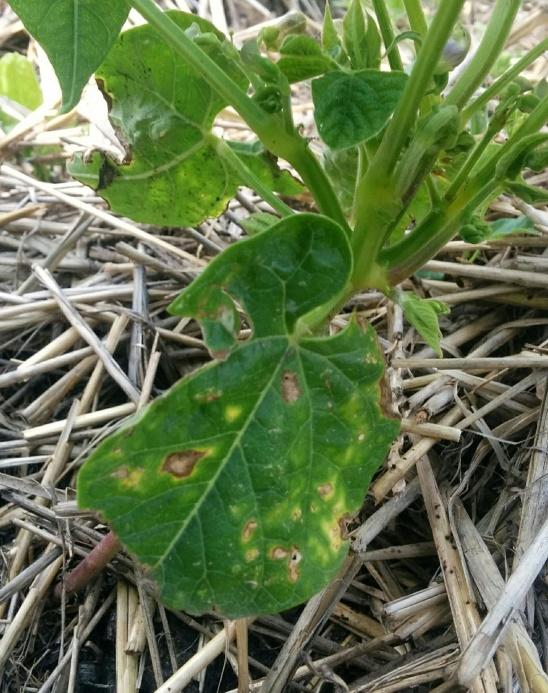 |
| Bacterial bean blight (prob. Halo blight, caused by Pseudomonas syringae pv. phaseolicola) |
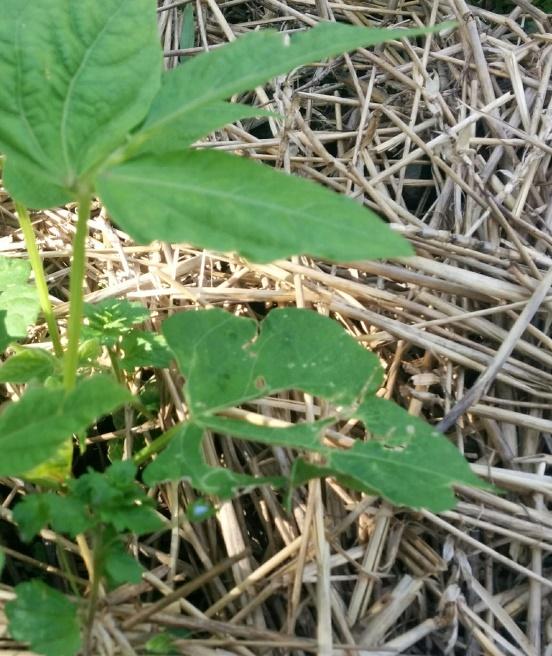 |
| Bean leaves, eaten by prob. true bugs |
| CROP | FAMILY | PROBLEM | LEVEL OF DAMAGE
(IMPACT ON PRODUCTIVITY)
April - May |
| Maize (Zea mays), 2 different varieties | Gramineae | One variety - stunted growth in the shaded area, chlorosis (pale colour)
The third variety – new leaves curled, distorted, pale, prob. virus – third of plants | Potentially Significant
Potentially Significant |
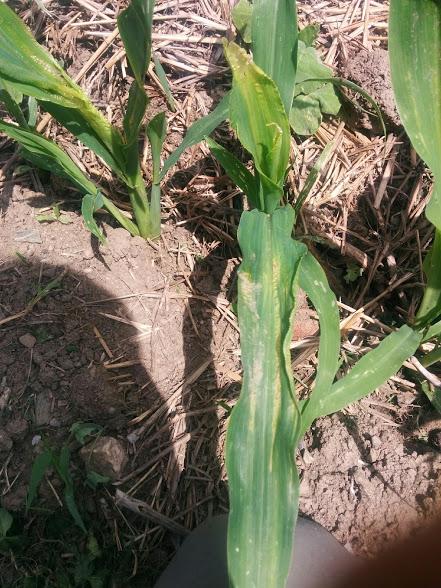 |
| Distorted new corn leaves, prob. virus |
| CROP | FAMILY | PROBLEM | LEVEL OF DAMAGE
(IMPACT ON PRODUCTIVITY)
April - May |
| Early Potatoes | Solanaceae | Eaten leaves (prob. True bugs)
Wilted leaves, spots, necrosis of old leaves (Late blight, caused by the fungus-like oomycete pathogen Phytophthora infestans) | Not significant
Not significant at the moment of check, potentially can have a negative impact |
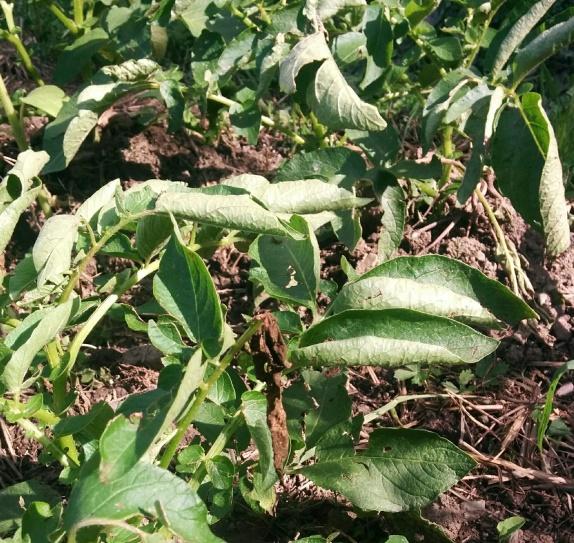 |
Wilted potatoes leaves, spots, necrosis (Late
blight - Phytophthora infestans) |
| CROP | FAMILY | PROBLEM | LEVEL OF DAMAGE
(IMPACT ON PRODUCTIVITY)
April - May |
Sunflower
Helianthus annuus | Asteraceae | Eaten leaves (prob. True bugs)
Those near Paulownia – chlorosis (prob. N deficiency or lack of water), spots (secondary fungal infection), necrosis | Not significant
Can be significant |
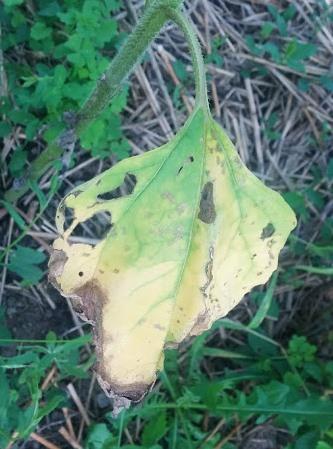 |
| Sunflower leaf |
| CROP | FAMILY | PROBLEM | LEVEL OF DAMAGE
(IMPACT ON PRODUCTIVITY)
April - May |
Parsnip
Pastinaca sativa | Apiaceae | Maggot of celery leaf mining fly Euleia heraclei
– one plant
Eaten leaves (prob. True bugs) | Not significant
Not significant |
 |
Maggot of celery leaf mining fly Euleia heraclei
on a parsnip plant |
| CROP | FAMILY | PROBLEM | LEVEL OF DAMAGE
(IMPACT ON PRODUCTIVITY)
April - May |
Beetroot
Beta vulgaris | Chenopodioideae | Eaten leaves (not specific pest)
Cercospora leaf spot, caused by the fungus Cercospora beticola | Not significant
Not significant, potentially can have an impact on beet size |
 |
Cercospora leaf spot on beetroot, caused by the fungus Cercospora beticola |
| CROP | FAMILY | PROBLEM | LEVEL OF DAMAGE
(IMPACT ON PRODUCTIVITY)
April - May |
Broccoli
Brassica oleracea var. italica | Brassicaceae | Whitefly (Aleyrodes proletella) – all plants
Aphids (green (Cabbage aphid -Brevicoryne brassicae) and black)
The harlequin cabbage bug (Murgantia histrionica)
Cabbage Curculio - a small weevil (Ceutorhynchus rapae)
Caterpillars of Cabbage white butterfly (Pieris rapae) - some plants | Potentially Significant on some plants
Combined effect can be significant
Older plants are more resilient |
 |
| Brassica or Cabbage Bug (Eurydema oleracea) |
 |
| Whitefly (Aleyrodes proletella) on broccoli plant |
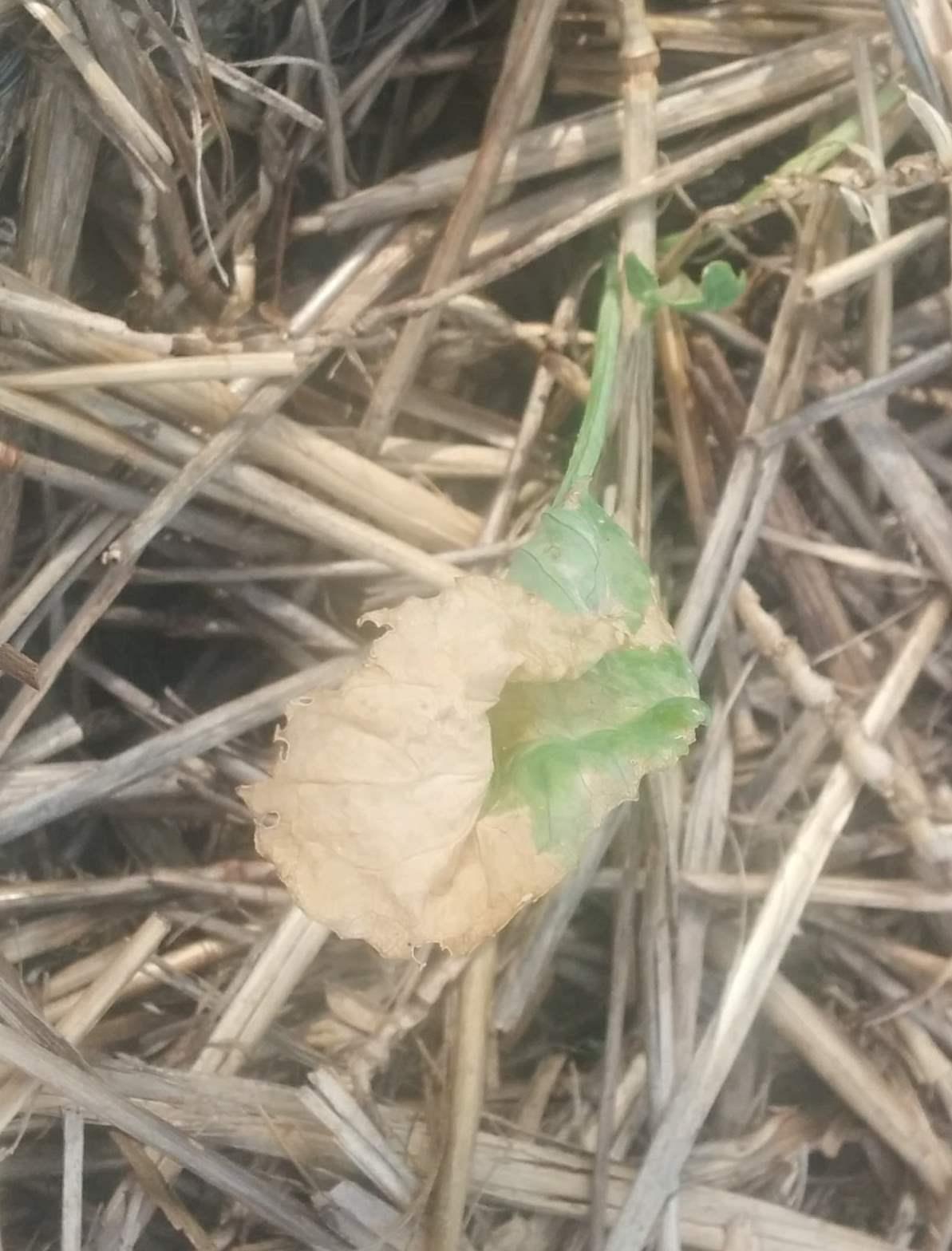 |
| Necrosis by prob. heat wave on young broccoli plant |
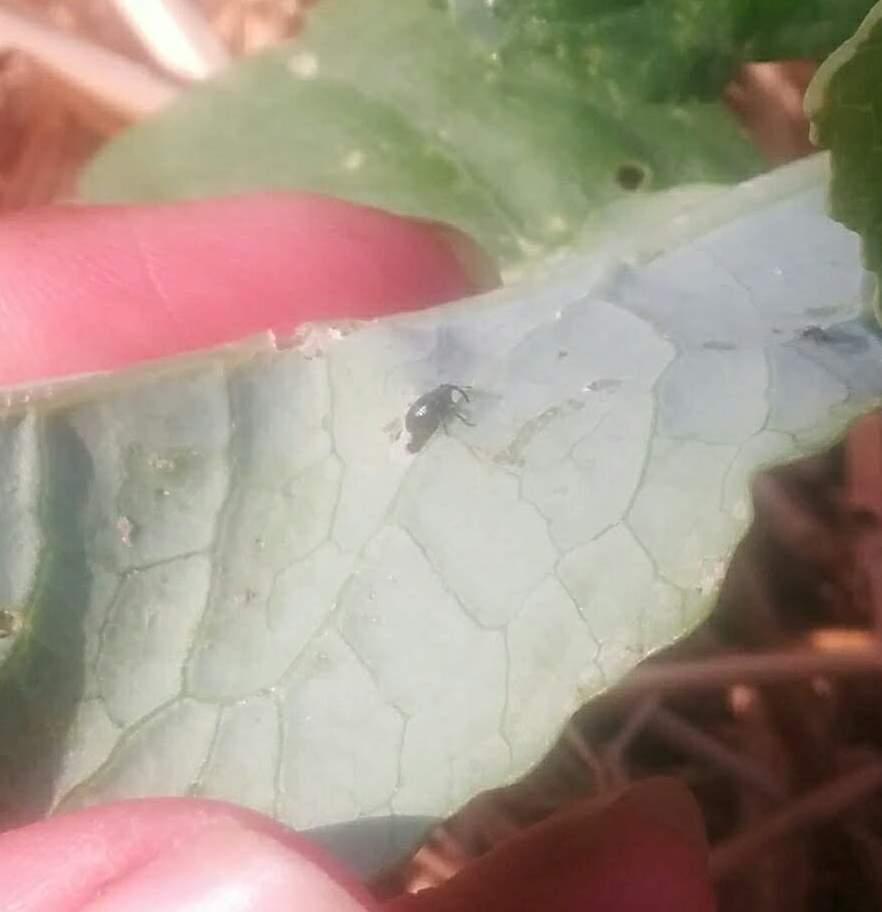 |
Cabbage Curculio - a small weevil
(Ceutorhynchus rapae) on broccoli plant | |
|
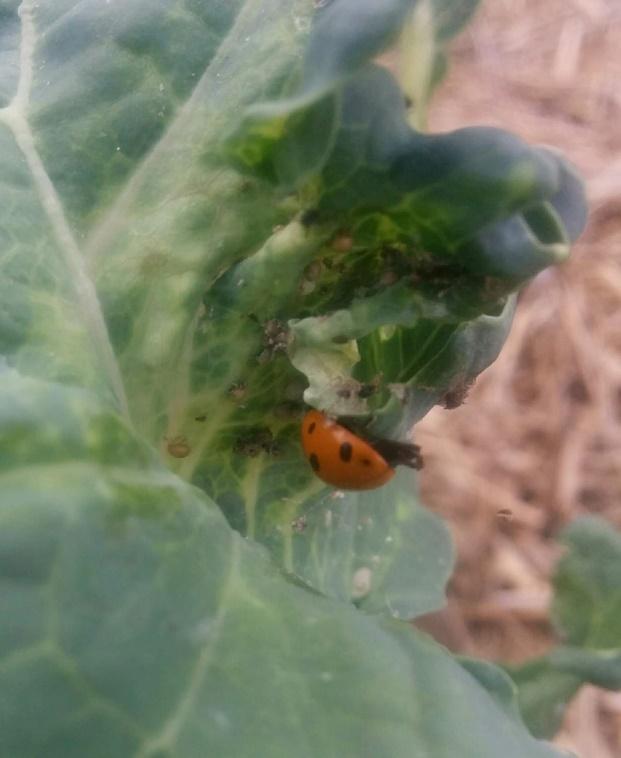 |
| Aphids on broccoli plant eaten by Ladybug |
 |
| Caterpillar of Cabbage white butterfly (Pieris rapae) on broccoli plant |
| CROP | FAMILY | PROBLEM | LEVEL OF DAMAGE
(IMPACT ON PRODUCTIVITY)
April - May |
Squash
Cucurbita pepo | Cucurbitaceae | Powdery mildew Erysiphe cichoracearum – mild on old plants, prominent on young
Leaf miner – one plant
Uniform chlorosis on some plants – prob. N deficiency | Not significant
Not significant
Not significant |
 |
| Powdery mildew Erysiphe cichoracearum on young squash plant |
 |
| Uniform chlorosis on old leaves (N deficiency??), squash plant |
| CROP | FAMILY | PROBLEM | LEVEL OF DAMAGE
(IMPACT ON PRODUCTIVITY)
April - May |
Basil
Ocimum basilicum | Lamiaceae | Chlorosis, wilting, stunted growth, spots– replanting, deficiency, bacteria (???)
Prob. Downy mildew Peronospora belbahrii/ too weak plants during replanting | Potentially Significant |
 |
| Weak and damaged basil plants, multiple influencing factors |
| CROP | FAMILY | PROBLEM | LEVEL OF DAMAGE
(IMPACT ON PRODUCTIVITY)
April - May |
Turnip
Brassica rapa subsp. Rapa
Swede
Brassica napobrassica) | Brassicaceae | Brassica or Cabbage Bug (Eurydema oleracea)
Chlorosis and necrosis of old leaves – investment into roots
Dark leaf spot - prob. Alternaria brassicicola | Not significant
Not significant
Not significant |
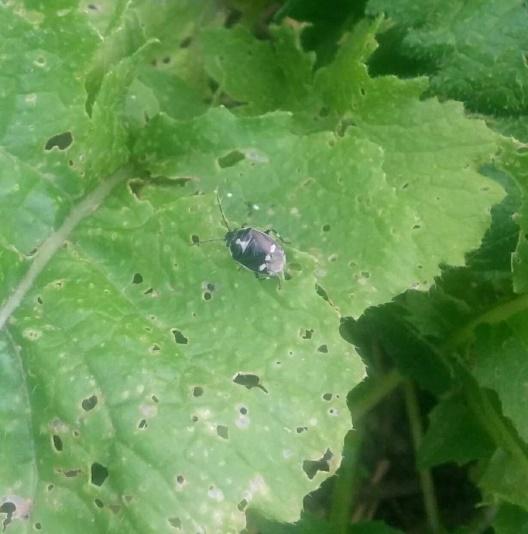 |
Brassica or Cabbage Bug (Eurydema oleracea)
on turnip plant (grown next to broccoli) |
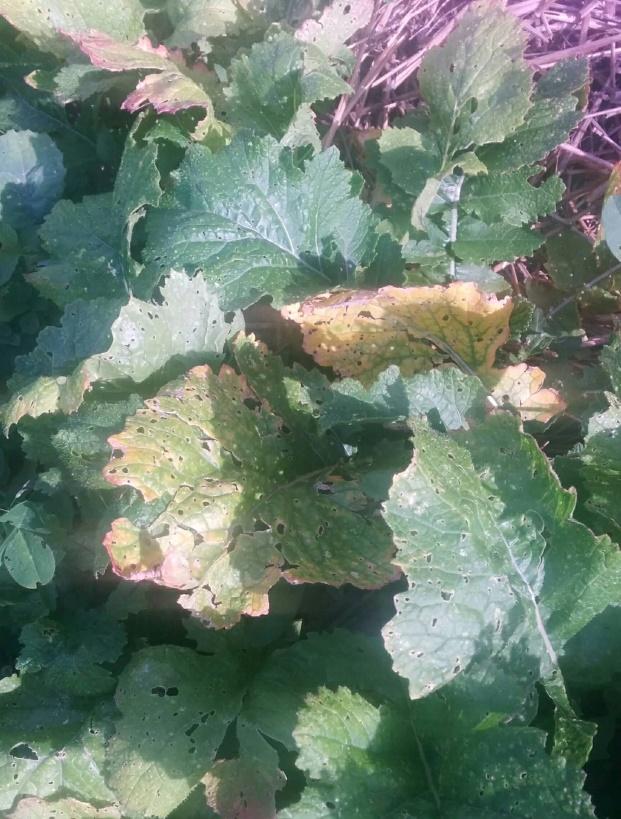 |
| Senescence of old leaves on turnips |
| CROP | FAMILY | PROBLEM | LEVEL OF DAMAGE
(IMPACT ON PRODUCTIVITY)
April - May |
Tomato
Solanum lycopersicum | Solanaceae. | Chlorosis and necrosis of old leaves, spots – late blight, caused by the fungus-like oomycete pathogen Phytophthora infestans | Potentially can be significant, previous experience proved no impact on fruits |
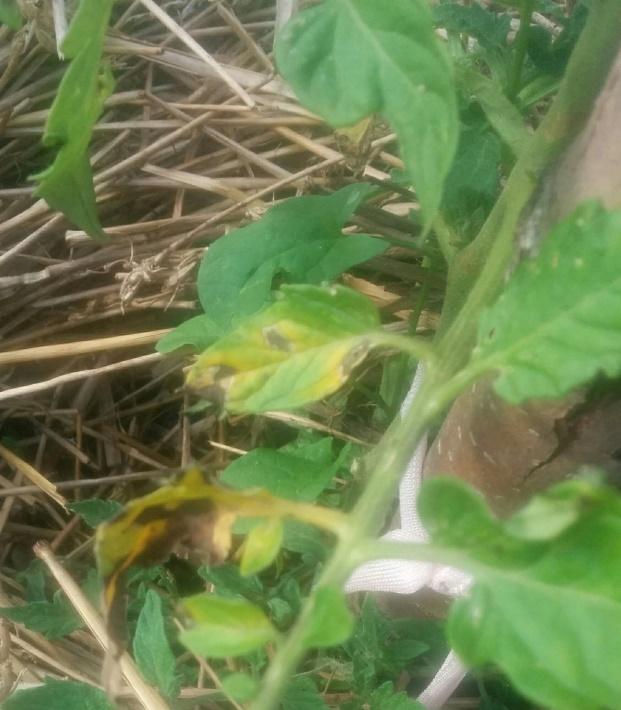 |
Late blight on tomatoes, caused by the fungus-like
oomycete pathogen Phytophthora infestans |
| CROP | FAMILY | PROBLEM | LEVEL OF DAMAGE
(IMPACT ON PRODUCTIVITY)
April - May |
Cucumber
Cucumis sativus | Cucurbitaceae | Necrosis of leaves edges, spots holes – prob. downy mildew (caused by the oomycete Pseudoperonospora cubensis)
Green caterpillar (only nest?) | Not significant |
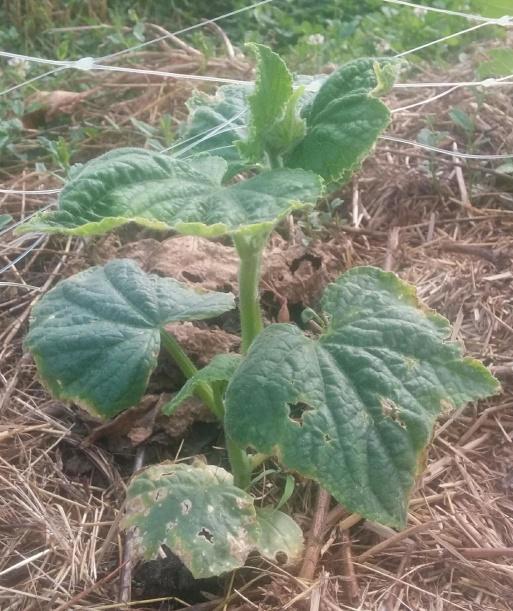 |
prob. downy mildew (caused by the
oomycete Pseudoperonospora cubensis) on cucumber plant |
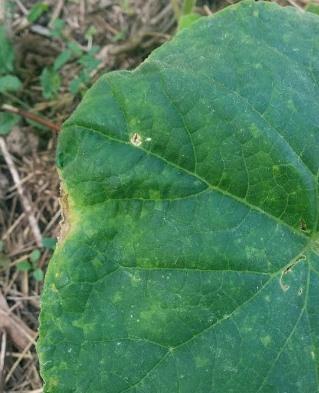 |
prob. downy mildew (caused by the oomycete
Pseudoperonospora cubensis) on cucumber plant |
Upcoming Forest Garden Courses
If you would like to create a forest garden and gain some practical hands-on experience come and join us for our Design and Build a Forest Garden Course. We'll be covering site surveying, landscape design software, installing access, beds, irrigation channels, planting tree, shrub, herb and ground layers, and wildlife ponds. All in 3 days! And plenty of follow up material to take away with you to digest slowly.
Regenerative Landscape Design - Online Interactive Course
Want to learn how to design, build and manage regenerative landscapes? Join us for our Regenerative Landscape Design - Online Interactive Course from May 1st to Sep 13th, 2023.
We're super excited about running the course and look forward to providing you with the confidence, inspiration, and opportunity to design, build and manage regenerative landscapes, gardens, and farms that produce food and other resources for humans while enhancing biodiversity.
You can find out all about the course here and right now we have a 20% discount on the full enrollment fees. Just use the promo code RLD
2023 in the section of the registration form to receive your discount. We are looking forward to providing you with this unique online learning experience - as far as we know, the very first of its kind. If you are thinking of reasons why you should do this course and whether this course is suitable for you, take a look here where we lay it all out. Looking forward to it!
--------------------------------------------------------------------------------------------------------------------------
Support Our Project
If you appreciate the work we are doing you can show your support in several ways.
- Comment, like, and share our content on social media.
- Donate directly via PayPal to balkanecologyproject@gmail.com or via FTX Pay
--------------------------------------------------------------------------------------------------------------------------







No comments:
Post a Comment